Uluru resort Longitude 131 puts Ernabella Arts in the picture
Away from the furore over white interference in black paintings, visitors can watch Indigenous artists at work first-hand.
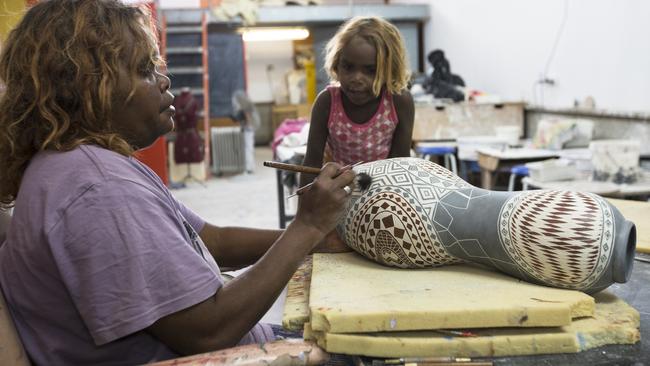
The little flying machine shudders and shakes as it gets off the ground, taking wing into the blue. The Cessna six-seater is transporting us on a joy ride like no other, climbing up over the red earth and spinifex and heading towards Uluru, so close I could reach down and almost touch it.
Is it just me, or does everything look like a painting up here? It’s hard not to see our country through the eyes of artists who have captured it so splendidly. The buttocky mounds of Kata Tjuta are like a Brett Whiteley painting. In the far distance, purple-hued mountains are straight out of an Albert Namatjira. Towards the east are pools of silvery light – Lake Amadeus – just like the paintings by Janice Stanley we were looking at moments before.
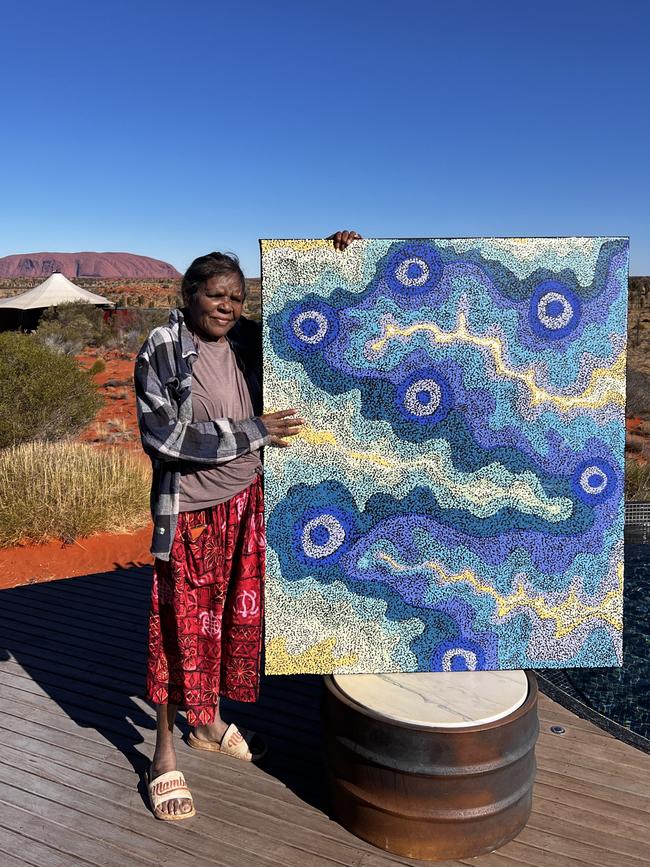
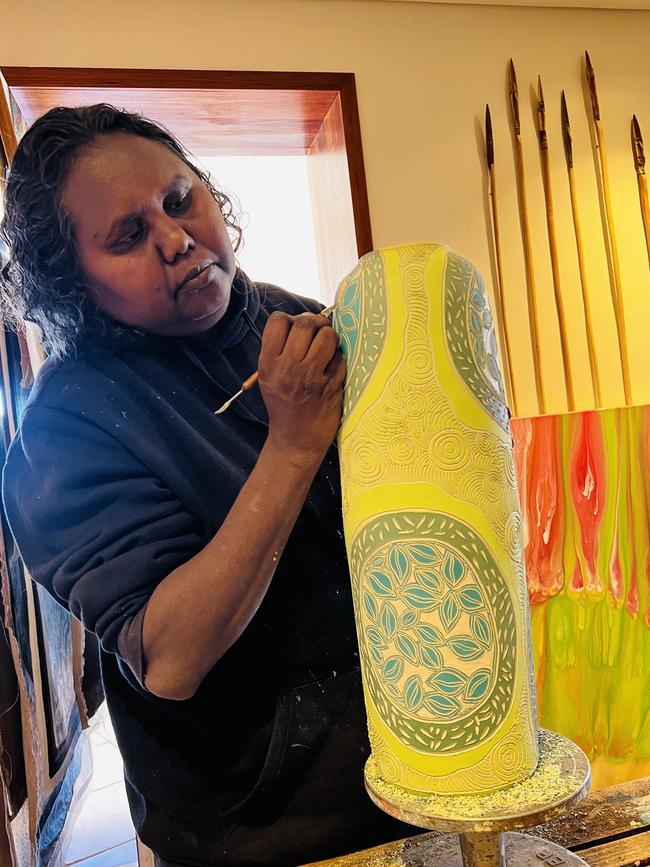
Janice and her aunt, Inawinytji Stanley, are two of the participating artists in an innovative collaboration between luxury resort Longitude 131, where we’ve come from, and Ernabella Arts, about an hour away courtesy of pilot Alex Clarey, from Ayers Rock Scenic Flights. Here’s the deal. Five times a year, two artists from Ernabella Arts enjoy a retreat at Longitude 131, where they can have a break from family life and focus on their artistic work in extremely comfortable surroundings. Visitors can watch as they paint, and ask about their artistic practice.
In addition, guests at Longitude can take up the option of a day trip to Ernabella Arts. The art centre, at Pukatja on the APY Lands, just across the border in South Australia, is one of the few with such an arrangement that allows visitors. Permits are not otherwise granted to casual tourists. For art lovers, and for artists, it’s a partnership that works both ways. The Pitjantjatara term is ngapartji ngapartji, meaning reciprocity or sharing.
Alex brings the plane between the copper-coloured hills of the Musgrave Ranges and lands on the gravel airstrip at Ernabella. This is my first visit to a remote Indigenous community, a place as Australian as it gets, and yet, to this city whitefella, entirely foreign. The sense of community is strong. Women are gathered around an open fire as kangaroo tails, wrapped in foil and buried in the embers, finish cooking. (Stand back from the spurting fat when the tail is chopped into segments.) A motley pack of dogs, some with pointy ears like dingoes, pad around the campfire or bask in the sun.
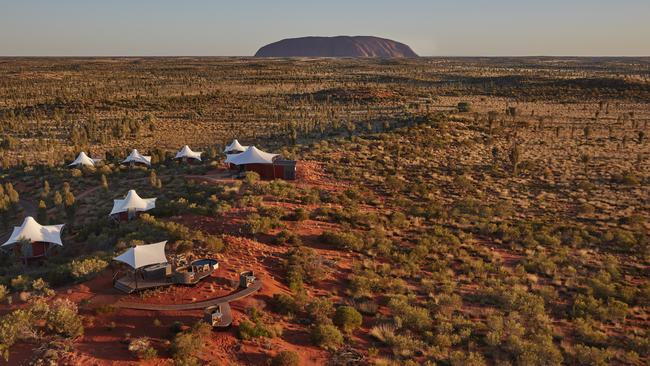
Ernabella Arts is the oldest continuously working Indigenous art centre in the country. While on the APY Lands, it is not part of the APY Art Centre Collective, the subject of the “white hands on black art” investigations by this newspaper. It was born when the Presbyterian mission opened a craft room in 1948 where women produced handspun wool, rugs and wall hangings. In the 1970s, artists travelled to Indonesia to learn batik, and Ernabella became famous, and collectable, for its batik fabrics, combining Indigenous motifs with the Javanese dying technique.
Then, 20 years ago, the focus shifted to ceramics. The centre now produces unique hand-built and wheel-thrown pots, glazed and fired in the studio. Pieces are for sale at Ernabella, but most of the work is shipped to city galleries, or entered in events such as the Telstra National Aboriginal and Torres Strait Islander Art Award in Darwin. We inspect several creations in the stockroom awaiting shipment, glazed and incised with figures of birds, honey ants and other bush creatures. There are also stacks of handmade, brightly coloured tiles – orange, blue and brown – that will be used around the eagerly awaited new swimming pool being built at Pukatja.
The art centre is divided into separate areas for painting and ceramics, and we’re shown through the studios by Anne Nginyangka Thompson, chair of Ernabella Arts. Elizabeth Dunn is working on a hand-built piece, using a scraper to smooth over the unfired clay to produce a curvaceous, organic finish. Derek Thompson, Anne’s cousin, is using a stylus to carve an incised design across a pot surface, making the segmented forms of witchetty grubs. Resting the pot on a piece of foam, he cuts away at a black, unfired glaze, exposing the creamy pale clay underneath.
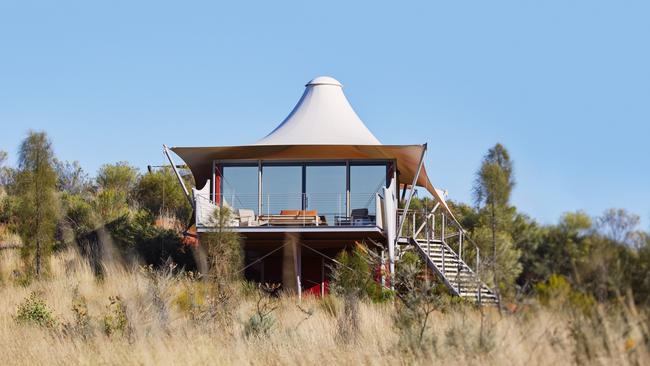
Anne Thompson, winner last year of the $20,000 Indigenous Ceramic Award at Shepparton Art Museum in Victoria, shows us a beautiful ceramic piece she is painting. It is part of her ongoing series called Strong Family Connection, and describes her ancestral home on Pitjantjatjara country: the sky, rocks and waterholes, trees and birds. There’s even a tiny figure of a dingo.
Thompson, 35, had a traditional bush upbringing – “no lollies or anything” – and was taught from an early age how to survive on country; what you can and cannot eat, and where to find water. The piece she’s working on represents this relationship with nature, and the tenets of reciprocity whereby you look after the country, and the country looks after you.
“If you cut down all the trees you don’t have a life cycle any more,” she says.
After a picnic lunch in the park at Ernabella, provided by Longitude 131, it’s time to make our way back to the airstrip for the return flight to Uluru. Upon arrival, I need an hour or so to allow the Ernabella experience to sink in. The accommodation is styled as tented pavilions with pitched roofs, each fully airconditioned and luxuriously appointed. I make a pot of green tea and stretch out on a sun lounge on our private deck. Uluru shimmers in the distance, the colours deepening in the late afternoon to deep orange and violet. The only sound is the whistle of wind through the desert oaks.
The sun is already setting as we drive the short distance to the Field of Light, an outdoor artwork by Bruce Munro that comprises 50,000 lights supported on slender stems. It takes about 20 minutes to walk around the perimeter of the installation, which reminds me of those optic-fibre lamps from the 1970s. The colours change from pink to mauve, lime green and purple, a wash of light that spreads across the field.
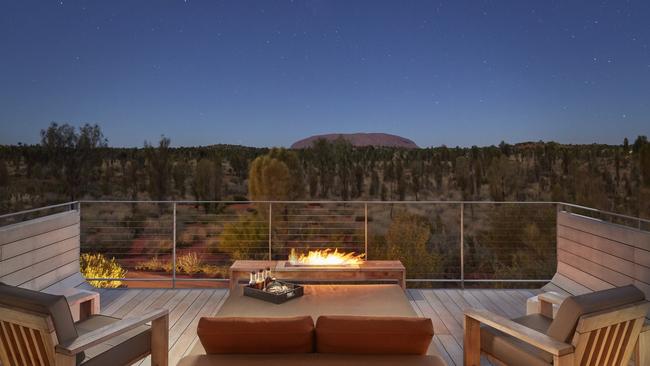
Our final dinner at Longitude 131 is the Table 131 experience, where the resort’s chefs bring their fine-dining skills into the outdoors, under a canopy of stars. It’s chilly, but there are overhead gas heaters and blankets to wrap around our legs. All of the meals at the resort have been exceptional, with fresh seafood flown in and matching wines for each course, often starting with a glass of Louis Roederer Champagne. Tonight we begin with a lobster amuse bouche, followed by a delicate consomme, and fillets of lamb grilled on the barbecue. The service is attentive and personal.
When we retire to our pavilion, there’s the most enticing turn-down service I’ve ever seen. A swag has been spread out on the deck, turning the sun lounge into snug bed. A tray has been left with decanters of cognac, port and other goodies. The dancing flames of a gas fire, like our own private campfire, complete the picture of desert cosiness.
Uluru is by now a dark monolith on the horizon. The milky way stretches across the sky. I feel myself exhaling deeply, and remember what Anne Thompson told us that afternoon about the beautiful quiet in the bush at night. She much prefers to be on country, not in the town at Ernabella. I agree wholeheartedly.
IN THE KNOW
Fly to Yulara (Ayers Rock/Connellan airport) on direct flights from major cities. A two-night stay at Longitude 131 starts at $8400 for two in a tent suite, all inclusive. Day trips to Ernabella must be booked in advance, April to October, from $3400 for up to four guests. Artists are next in residence at Longitude 131 from July 17-21, September 18-22, and November 20-24.
Matthew Westwood was a guest of Baillie Lodges.



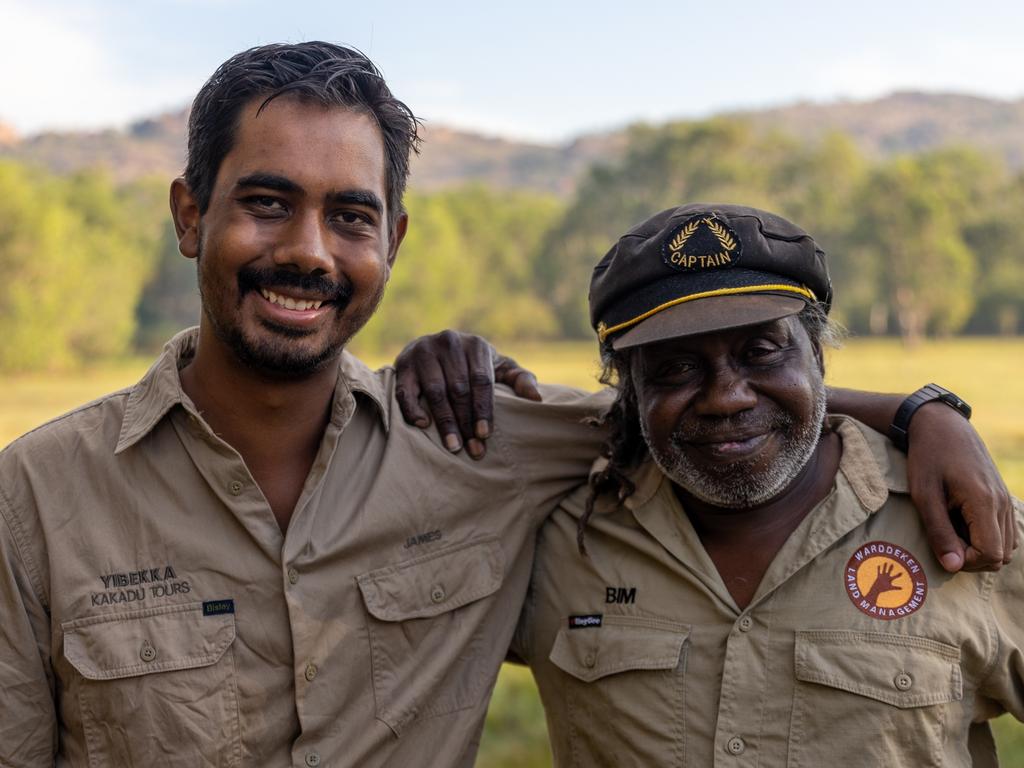
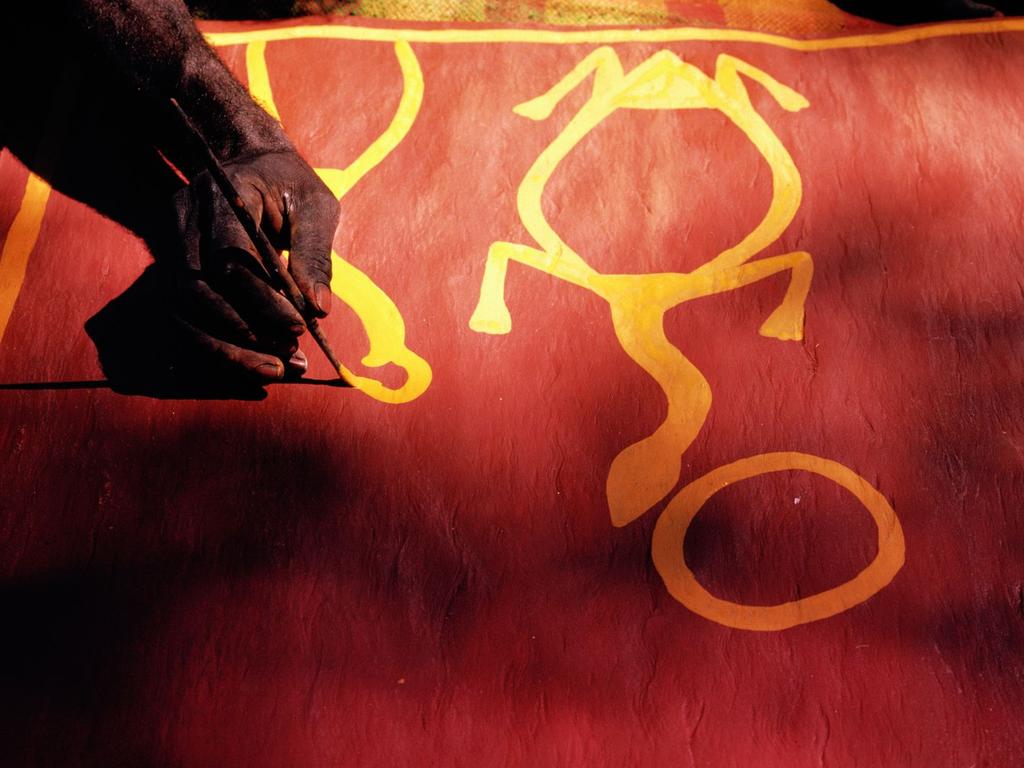
To join the conversation, please log in. Don't have an account? Register
Join the conversation, you are commenting as Logout